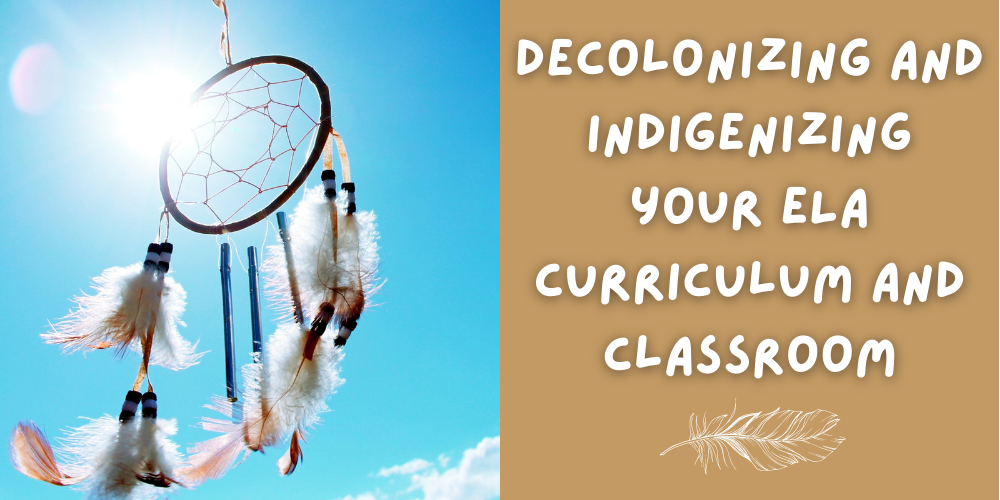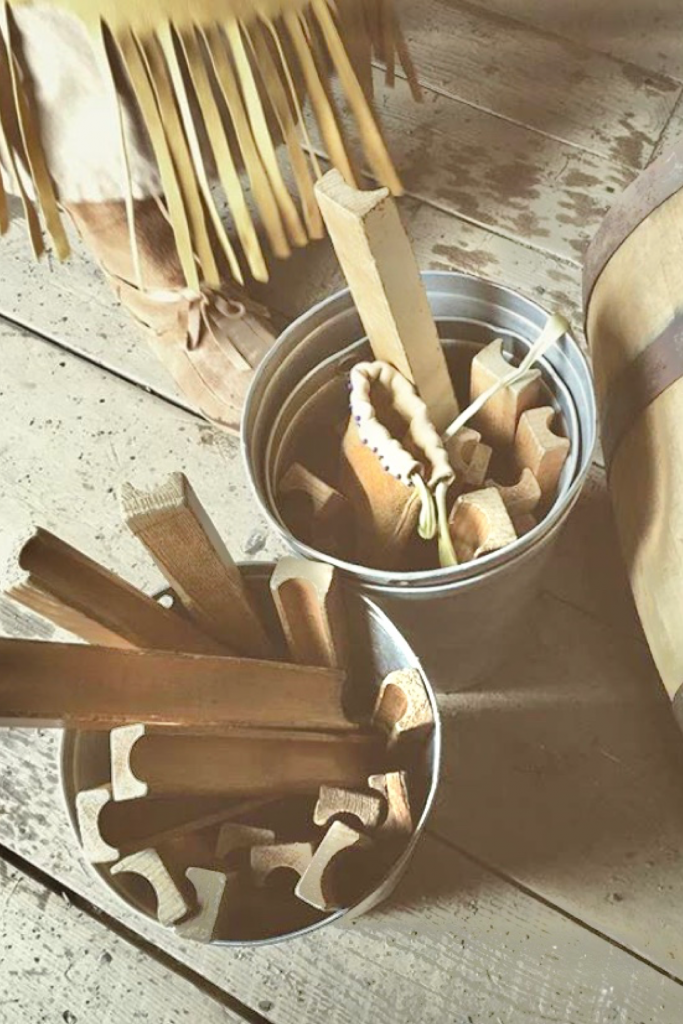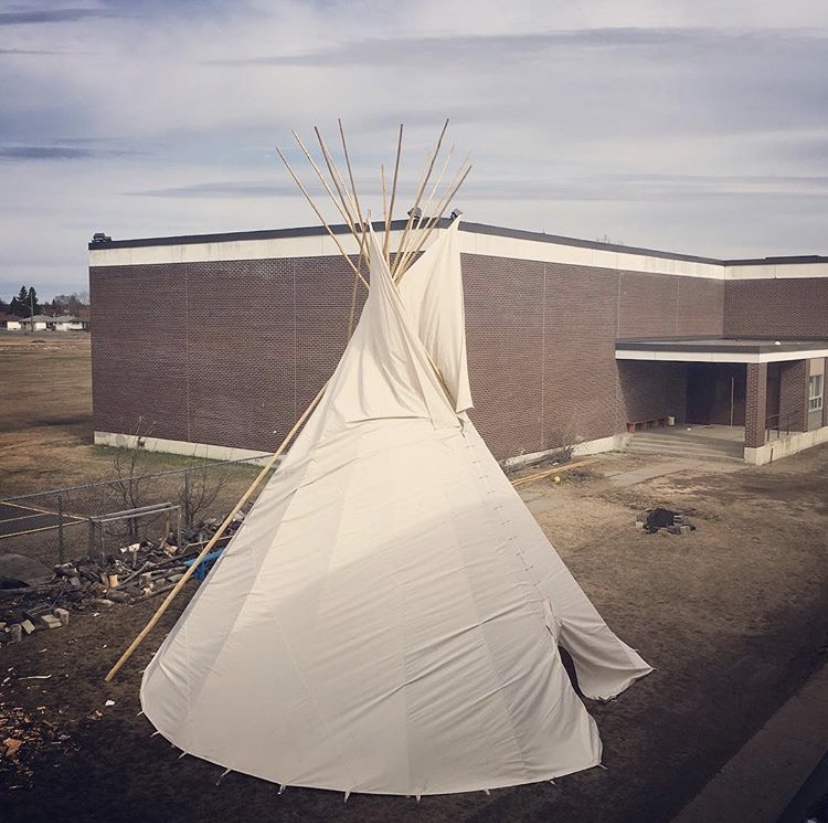Decolonizing and Indigenizing your ELA Curriculum and Classroom
Sharing is caring!

PREFACE
This blog post is written from the perspective of a White secondary ELA teacher who has worked with Indigenous students exclusively at a First Nations private high school for the last fifteen years. My experiences are primarily from working with Ojibwe, Cree, and Ojicree students from Treaty 5 and Treaty 9 territory in Northern Ontario, Canada.
I’d like to start by acknowledging that while the lessons learned are my own, I owe my knowledge and understanding to the Indigenous people I have worked with, learned from, and have been inspired by. This post is not meant to take space from Indigenous Elders and Knowledge Keepers, Indigenous educators and thought leaders, it is only intended to provide my reflections of my own teaching journey. I encourage you to seek out and learn Indigenous knowledge and ways of knowing and being from Indigenous people.
Whether you are working in an Indigenous school like me, or a public school with a diversity of students, taking steps to decolonize and indigenize your curriculum and classroom will have positive and lasting impacts for all students in your classroom and this will ripple out into their interactions in society.

WHAT DOES IT MEAN TO DECOLONIZE AND INDIGENIZE?
Decolonization is the process of deconstructing colonial ideologies and practices and decentering them from being viewed as the norm or superior. Furthermore, Indigenizing is when we naturalize Indigenous knowledge systems and weave them together with Western knowledge systems – both distinctly understood and appreciated ways of knowing. When we get our teaching degrees, I think it can be argued that the majority of the teaching practices we are taught are rooted in Western thought. Most of us are also products of Westernized teaching, so it has to be a deliberate process as a teacher to commit to decolonizing your curriculum and classroom.
WHAT CAN I DO AS AN ELA EDUCATOR?
Listen to and acknowledge the lived experiences of Indigenous people
If you are a non-Indigenous educator, it is important to listen to gain understanding. Educating yourself on Indigenous history and issues is essential, but you also need to listen to Indigenous people’s lived experiences in their own words. Another major component of this is acknowledging that you will never understand the experience of being Indigenous so you cannot represent yourself as a conveyor of information through an Indigenous lens, but instead acknowledge and critique your position within a dominant culture.
Educate yourself on the history of Indigenous people
Being educated on Indigenous history and knowing the issues that Indigenous people have faced historically and still face today will help you to deconstruct colonial ideologies by providing the Indigenous perspective that is often lacking in school textbooks. It is also important to acknowledge that Indigenous history is the history of our country, it’s not separate.
Indigenous Representation in Your Classroom Literature
An essential part of decolonizing and Indigenizing your curriculum and classroom is the literature you choose to include both in study and in your classroom library. Ensure that you expose your students to a wide array of voices and perspectives, including those of Indigenous people. Also remember that representation matters, so it is important to not just have books that highlight Indigenous characters in a historical context, or books that contain Indigenous characters, you want to include books that are written by Indigenous authors about Indigenous characters in contemporary contexts as well.

Deconstruct Ideas of What Teaching Looks Like
Actively weave together westernized approaches to curriculum, teaching, and classroom environment with Indigenous ways of knowing, teaching and cultural practices. We need to recognize and respect cultural differences in approaches to education and learning.
- Including Elders and Knowledge Keepers in your lessons can help students to make richer, more meaningful connections to the curriculum. Elders and Knowledge Keepers can also help facilitate traditional practices like sharing circles as a method of lesson delivery.
- Consider a land-based learning approach for lessons that can be taken outside. Indigenous people have a strong connection to the land so taking your students out on the land for a traditional activity with an Elder, spending time outside reading, or going on a nature walk while discussing your curriculum content can all be powerful ways to connect with students and help them engage with the learning.
- A common worldview among Indigenous Peoples is a holistic one that sees the whole person (physical, spiritual, emotional and intellectual) as interconnected to land and relation to others. Finding access points in the curriculum to explore the physical, spiritual, emotional and intellectual perspectives on a topic or delving into these facets of a character in literature can be a very enlightening experience for all involved.
Make Learning Relevant to Indigenous Lives and Viewpoints
Being knowledgeable about both Indigenous history and current events will help you to infuse your instruction with examples and analogies that allow students to make connections to Indigenous viewpoints and lived experiences. All students need to feel connected to what they are learning and see the relevance and importance to their lives, especially Indigenous students who come from families whose viewpoints have historically been excluded from the education system.
Celebrate Language and Culture in Your Classroom
Including the Indigenous language and cultures of your Indigenous students in your classroom environment are invaluable steps in strengthening Indigenous identity and pride in your Indigenous students and their sense of belonging in the classroom. Including syllabics or Indigenous language in Roman Orthography on classroom signs, displaying Indigenous knowledge like the Seven Sacred Teachings or Medicine Wheel, and including representation of Indigenous people and culture in classroom posters are some ways you can address decolonization and Indigenization of your classroom environment.
Cultivate a Student Centered Approach that is Grounded in Genuine Relationships
Many Indigenous students today come from homes that struggle with the intergenerational impacts of the residential school system. They also may come from reserves where teacher turnover is quite high. Establishing a solid relationship with Indigenous students that is based on mutual respect and grounded in a level of care and understanding is essential for our Indigenous students to thrive. When students know that you care and plan to stick around, they can see that you are invested in their success and have high expectations of them to achieve their potential.
Miigwech!
Leave a Reply Cancel reply
© Mochas and markbooks 2025 | Template by Waymaker Designs |
Appreciating the commitment you put into your site
and in depth information you offer. It’s nice to come across a blog every once in a while that isn’t the same outdated rehashed material.
Excellent read! I’ve saved your site and I’m including your RSS feeds to my Google account.
Thank You! I’m glad you enjoyed reading this post.
[…] for all Canadians. If you plan to read this series with your students, you may be interested in this post where Katie discusses how Indigenized and decolonized learning looks like in her ELA […]